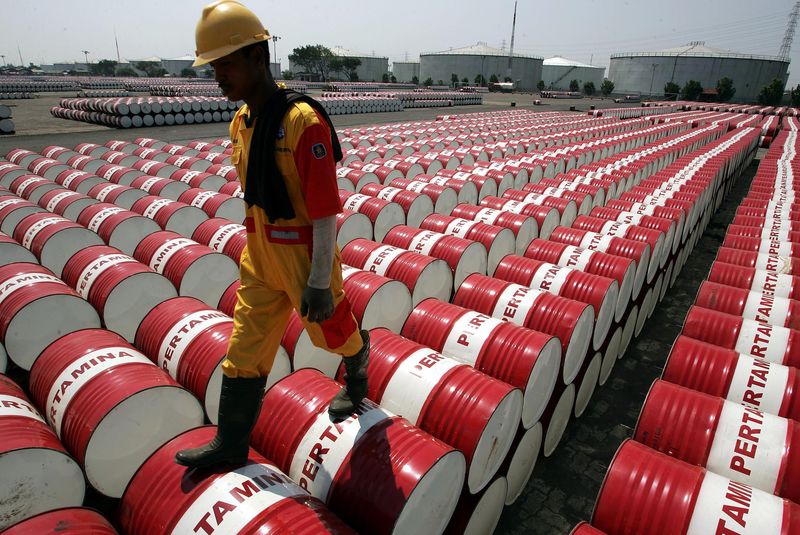Investing.com - U.S. crude oil inventories fell at their fastest rate since July 2018 last week, adding to evidence that the global oil market is responding to supply cuts led by OPEC and Russia.
The Energy Information Administration said in its weekly report on Wednesday that crude oil inventories declined by 9.59 million barrels in the week to March 15, adding to a drop of 3.86 million barrels in the previous week. Analysts had expected a modest stockpile build of 0.31 million barrels.
The EIA report also showed that gasoline inventories fell by 4.59 million barrels, nearly twice the expected draw of 2.41 million barrels, while distillate stockpiles dropped by 4.13 million barrels, compared to forecasts for a decline of 1.09 million.
“This is a huge decrease across the board that should have OPEC very pleased with its production-cutting strategy,” Investing.com analyst Barani Krishnan commented on the report.
U.S. crude prices traded higher after the data release, gaining 0.5% at $59.59 a barrel by 10:37 AM ET (14:37 GMT), compared to $59.15 prior to the publication.
London-traded Brent crude futures traded up 0.5% to $68.00 a barrel, compared to $67.60 ahead of the release.
“The crude stockpile draw of nearly 10 million barrels, especially, compared to market expectations for a 300,000-barrels build, is testimony of the steady pace in refining versus imports which are still lower than normal levels despite a pick-up last week," Krishnan said. "Added to that, you have 4 million barrel draws in both gasoline and distillates."
"On paper, this certainly puts octane in the tank of the bulls in their charge toward $60 WTI, though in reality, you have a market struggling today to balance oil’s fundamentals versus growing world economic worries.”
U.S. crude ended lower at the close on Tuesday as bulls ran out of steam. Bloomberg laid the blame at the door of concerns over U.S.-China trade negotiations, reporting that Beijing was pushing back against Washington’s demands. Bloomberg said Chinese officials are objecting to the lack of U.S. assurances that tariffs will be lifted when the deal goes through.
While sources from Reuters pointed to high-level talks scheduled in Beijing for the week of March 25, the risk is still that friction between the world’s two largest economies will cloud the outlook for the global economy, damaging demand for oil.
Even so, WTI oil is still up more than 2.5% this month and has skyrocketed around 30% in 2019, “supported by risk appetite through the link to rising stocks and fundamentally by OPEC/Russia (production) cuts and Trump sanctions (on Iran and Venezuela)”, Ole Hansen, head of commodity strategy at SaxoBank, said. “All (are) formidable opponents to any potential bear out there,” he added.
Aggressive production cuts carried out by OPEC, headed by Saudi Arabia, and another 10 allies of the oil-producing club, led by Russia, were in the spotlight this week as both the kingdom and Moscow stressed their plans to increase compliance with the output reduction.
Saudi Energy Minister Khalid al-Falih and Russian counterpart Alexander Novak appeared to band together in canceling an April meeting in favor of a more ‘sensible’ decision when the end of the current pact arrives in June.
But Krishnan warned that the cancelled meeting may in fact be a Saudi strategy to silence any objections.
“The Saudis can silence much dissent within OPEC with their position as the cartel’s de-facto leader,” he said. “Yet Falih seemed to be taking no chances in risking any mixed or muddled messaging coming out of the group a month from now, when global demand for oil is expected to remain subdued with major economies on the decline, and any lack of adherence to cuts on OPEC’s part could immediately hurt crude prices.”
